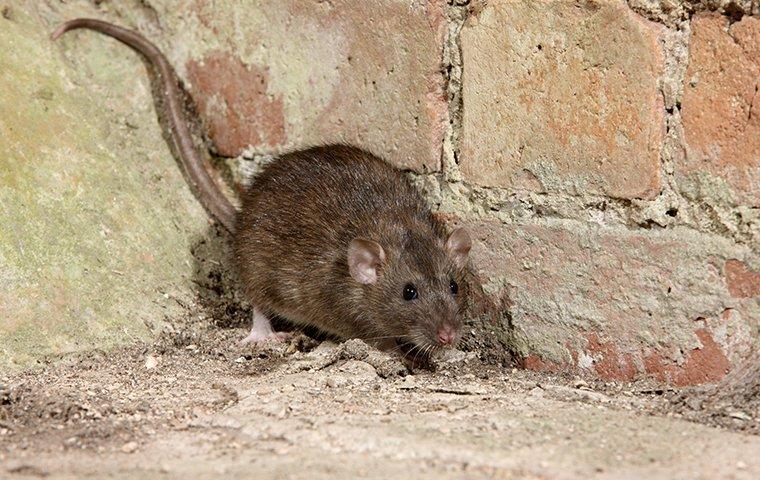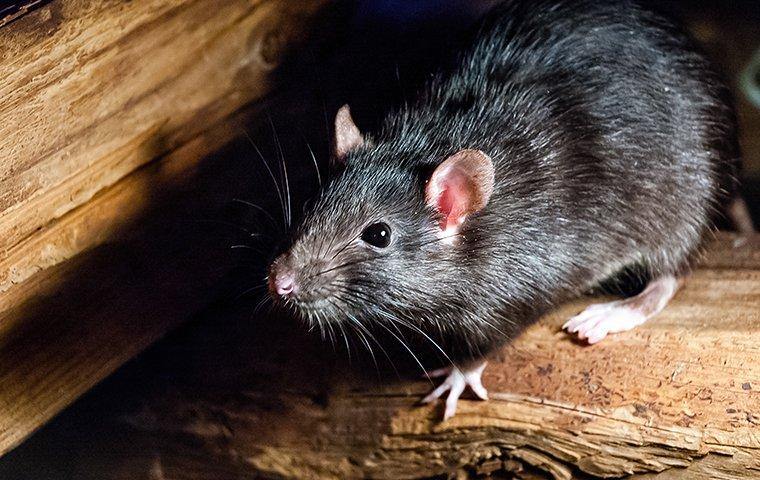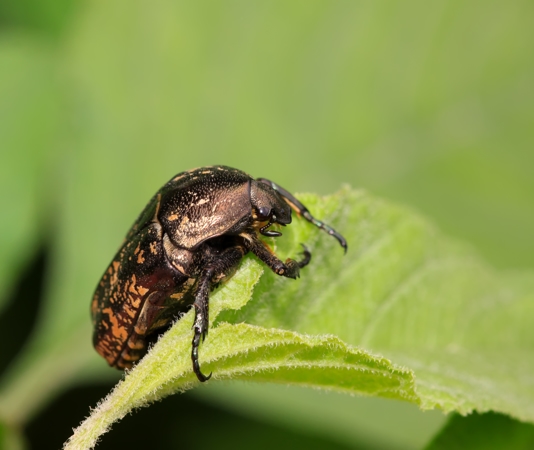Which Rodent Is Residing in Your Home?
Rats are one of the most common invasive and harmful pests found in homes across America. Able to squeeze into openings as small as ¼ inches in diameter, rats are adept at getting into homes and businesses, while spreading diseases and causing destruction wherever they go. Two common species of rats in the United States are Norway rats and roof rats.
Norway Rats
Norway rats are a species of rodent known for their keen swimming ability and are thus commonly found in or around bodies of water. They have heavy bodies with blunt noses, small ears, and small, bulging, black eyes.
Adult Norway rats measure between 7 and 9 ½ inches in length. Their tails are shorter than their bodies, usually between 6 to 8 inches in length, and are bi-colored, with dark coloration on top and lighter color on the underside. Their fur is shaggy in appearance, usually brown and scattered with black hairs. The fur on their underside is lighter than the rest of their body.
Beyond their physical appearance, they can also be identified by their dark, blunt-ended, rod-shaped droppings, which can be found scattered throughout the homes and businesses that they inhabit.

Are Norway Rats Dangerous?
Yes, Norway rats are dangerous to both people and properties. Like other rodents, Norway rats need to constantly chew on objects to keep their front incisors from overgrowing; this habit will damage baseboards, walls, personal property, and even electrical wiring. Norway rats will contaminate food and food preparation areas with their urine, feces, and saliva. They also spread serious diseases and bacteria to people and pets, and they carry harmful parasites such as mites and fleas that will infest homes and businesses.
Why Do I Have a Norway Rat Problem?
Outside, Norway rats burrow in things like garbage piles, woodpiles, and under concrete slabs. Like other household pests, Norway rats are drawn inside to find food, water, and shelter. Norway rat infestations are most common inside homes and businesses in late fall and winter months when the weather outside pushes them to seek warmth, food, and shelter. This species of rats are poor climbers and, therefore, invade basements, crawlspaces, and ground floors of homes and commercial properties.
How Do I Get Rid of Norway Rats?
Norway rats excel at getting into the hard-to-reach areas around your home, either by squeezing into small holes or by chewing their own entry points into walls and siding. Their ability to nest in hard-to-reach areas makes them difficult to eliminate without professional help. What's worse is, even if you can kill every rodent inside your home, you’ll still be left with the hazardous task of discarding their bodies and the biological elements such as their hair, droppings, and body oil that they leave behind.
For these reasons, a rodent infestation is always best left to the professionals. At Pestmaster®, our expert team can locate and get rid of all the Norway rats in your home while eliminating entry points and other attractants to keep them out in the future.
Our methods include the following:
- Whole-home inspections and monitoring
- Trapping
- Exclusion methods
- Habitat modification
- Baiting programs
We also offer decontamination and waste removal for potential hantavirus contamination sites. Contact us today to learn more about your rat control options.
Roof Rats
Roof rats are physically smaller than Norway rats. Their bodies grow between 6-8 inches with long tails adding another 6-8 inches to their total body length. Roof rats are dark brown or black in coloration, with a contrasting lighter-colored underbelly. They have a pointed nose, large ears, and large, black eyes.
As their name implies, roof rats commonly get into homes and buildings via the roof. Roof rats are excellent climbers; they use their long tails to keep balanced while climbing up nearby trees around a structure's roofline to find a way inside.

Are Roof Rats Dangerous?
Roof rats can be quite dangerous to the residents of the homes and businesses they infest. Like other rodent species, roof rats have front incisors that are constantly growing, and will thus chew on anything they come across in order to prevent overgrowth.
In a building, they will chew through drywall, insulation, wires, pipes, furniture, clothing, books, and other personal items. Their incessant chewing results in fire hazards, water damage, and other unwanted destruction throughout your home or business. Along with destroying your property, roof rats spread various diseases and bacteria. Wherever these rats travel, they leave behind a trail of urine and feces; rats are known for transmitting serious diseases to people including Salmonellosis and dysentery.
Why Do I Have a Roof Rat Problem?
Like Norway rats, roof rats generally enter homes or businesses because they offer them easy access to the three things they need for survival: food, water, and shelter. Roof rats can enter your home or business during any time of the year, but in areas with dramatic seasonal change, they tend to infest in the fall when the weather cools and they are looking for a safe space to overwinter.
How Do I Get Rid of Roof Rats?
The most effective way to completely eradicate roof rats from your property is to seek help from the rat control experts at Pestmaster®. Our professionals will use a number of proven techniques to find and eliminate any roof rats on your property so that you can maintain the safety and fortitude of your home or business. Contact us today for more information about our rodent solutions!
To learn more about how to get rid of rodents, contact your local Pestmaster® team today!
.png)



